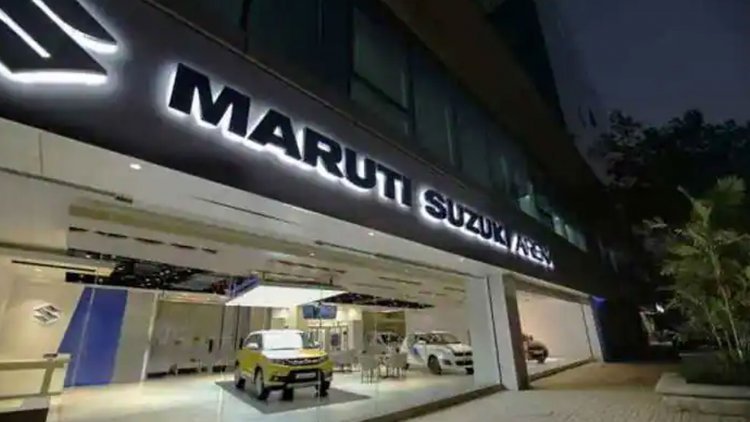Maruti intends to provide more nameplates with a CNG option
One of the main factors for the increase in sales of CNG variants is the cheaper operating cost, which is only a third of the cost of the petrol version. It is rumoured that the company will release a CNG version of the Brezza.

Automobile manufacturer Maruti Suzuki India Ltd. has expanded the number of nameplates it offers with the CNG fuel option in response to rising demand for CNG-powered vehicles.
Senior Executive Director for Marketing & Sales of the business claims
The automaker, according to Shashank Srivastava, intends to soon offer more nameplates with CNG alternatives.
"CNG has done a great job for us. The expansion of CNG stations around the nation is contributing to the segment's growing penetration, he said. "As and when the supply side scenario improves, we are ready to introduce more options in CNG."
In the domestic market at the moment, the company provides 15 vehicles, nine of which have CNG choices. The automobile manufacturer produces CNG versions of the Alto, WagonR, Dzire, Ertiga, S-presso, Eeco, Celerio, Super carry, and Tour S. Swift, Brezza, Ignis, Baleno, Ciaz, Xl6, and Super Carry, on the other hand, are only available in the petrol version.
CNG-powered Brezza
There was a lot of speculation that the carmaker may release a CNG-powered Brezza. As this development touches on the two main areas of the company's focus—the expansion of CNG vehicles and the improvement of its SUV portfolio—speculation is rife.
"We'll expand our current offering of CNG alternatives. I wouldn't rule out the idea of the Brezza or another model having a CNG option available soon, the man said.
Notably, the company sold over 1.14 lakh CNG car units last year. Additionally, it has reservations for an additional 1.3 lakh CNG automobiles. The company now holds the greatest market share for domestic CNG. In FY22, these automobiles' sales increased 48% year over year. Additionally, CNG and CNG plus petrol (dual fuel) vehicles are gaining market share. Around 20% of all sales were made up of CNG automobiles the previous year. The company has sold more than a million CNG vehicles in the past fifteen or so years.
The company produces between 25,000 and 30,000 CNG automobiles annually.
Low cost of operation
The lower running cost of CNG variants is one of the main factors contributing to their significant uptake. In the region of New Delhi, CNG currently costs, on average, Rs 20 less per kilogramme than gasoline per litre. The average operating cost of a petrol car is approximately Rs 5.25 per kilometre, according to industry estimates. A CNG-fueled vehicle, however, only uses a third of that amount to operate. In actuality, the price drops as usage rises.
Additionally, these vehicles are more appealing now that CNG is more widely accessible via pumps around the nation. Additionally, the ability to run on both CNG and gasoline (dual fuel) has grown in importance as a selling point. However, cars that run on CNG are more expensive than those that do not; in some cases, the price difference exceeds Rs 70,000. A CNG vehicle's life cycle maintenance is also thought to be more expensive than petrol-powered versions since the maintenance requirements for specific engine components, such as spark plugs, are higher in the former.
Focus on expanding the SUV line is another significant trend in the company's overall market strategy. 40% of the total domestic market is made up of this segment.
The carmaker currently holds a 67% market share in the non-SUV class, but the overall share is still below 50%.
We must boost our mid SUV class if we want to get a 50 percent market share overall, according to Srivastava. Within one to two years, we'll introduce new SUV-focused vehicles.
The Brezza, the company's entry-level compact SUV, has been on the market since 2016 and has so far sold 7.5 lakh units. It sold 1.15 lakh units the previous year. By the end of this month, the business intends to introduce the new Brezza.
Waiting time shortens
Srivastava further mentioned that waiting times for several automobiles will shorten in the coming months. Due to the ease of semiconductor supply and overall capacity utilisation reaching a level of 95%, this has been made achievable.
On the negative side, he noted that sales could be hampered by rising interest rates, high fuel prices, and inflationary pressures.
"Interest rates are rising while inflation remains sticky...
For the auto industry to accelerate, the whole economy must expand, according to Srivastava.




 admin
admin 




















